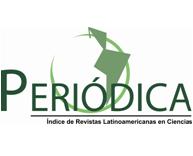APPLICATION OF LCA IN CONCRETE BLOCKS FOR THE MEASUREMENT OF IMPACTS THROUGH THE USE OF NATURAL AND RECYCLED AGGREGATES
Keywords:
life cycle analysis, recycled aggregates, evaluation, environmental impact, economic impact, social impactAbstract
This paper shows the results of the study of the economic and social environmental impacts of concrete blocks production in Eco-materials workshop in Manicaragua city. This is an experimental area of local production in Villa Clara, which belongs to Habitat project. The Life Cycle Analysis (LCA) tool is used through the use of SIMAPRO 7.3 program. For the measurement of environmental impacts, the Eco indicator 99 methodology is applied, and the Life Cycle Cost Analysis (CCV) for the economic ones. The functional units evaluated are the 10 and 15 cm blocks manufactured with two alternatives: natural aggregate and recycled aggregate. The results show that the production of blocks of 10 and 15 cm with recycled aggregate have a greater environmental impact due to the fact that more cement is used than those made with natural aggregate, although they have less impact on the exploitation of the quarries. The economic effect indicates that the blocks with recycled aggregate are more economical at $ 0.16 for those of 10 cm and $ 0.23 for those of 15 cm because they reduce transportation costs and materials. The social impact reveals that the block manufactured with recycled aggregate tends to have a negative influence on health, since it uses more cement, but an additional production of two units is achieved in the case of the 10 cm blocks and three in the 15 cm blocks using the same amount of aggregates from the quarries.




















